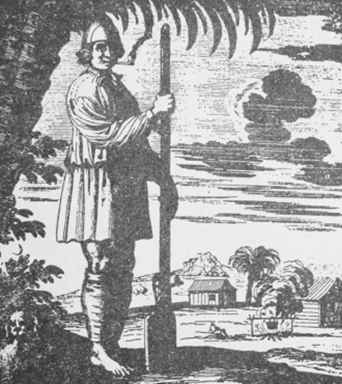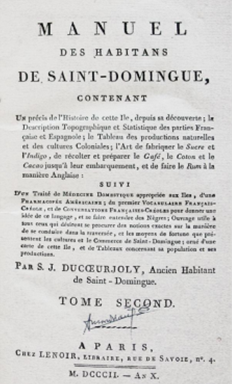"The Filibusters" by Robert Taber
Taber is a doctoral candidate in the History Department at the University of Florida. His dissertation is on poor whites in Saint Domingue.
Attracted by the silver carried by Spanish convoys leaving Havana, French-speaking sailors and merchants began arriving in the Caribbean in the mid-1500s. These filibusters (pirates or interlopers) also traded with Spanish settlers in western Hispaniola who had minimal access to Spanish merchants. To end this contraband trade, during the first decade of the 1600s the Spanish governor at Santo Domingo forcibly evacuated the western settlements, leaving behind large populations of cattle and pigs.
In the decades following the evacuation, a multiethnic group of men roamed western Hispaniola in groups of two or three, hunting the abandoned animals and selling their meat and hides to passing ships. Known as buccaneers because they roasted the meat on a traditional Taino spit over a fire, they also joined with filibusters in preying on Spanish, English, and French shipping. They operated out of Tortuga, an island just north of present-day Port-de-Paix. By the mid-1650s, the French had won control of Tortuga and the filibuster settlements on the north coast of Hispaniola, and in 1665 the French monarchy dispatched Bertrand D’Ogeron to work as the first official governor of Tortuga and Saint-Domingue (the French version of Santo Domingo). D’Ogeron worked to keep the filibusters and buccaneers loyal to France and recruited indentured servants to toil for the filibusters on their tobacco plantations.
Africans and people of partial African descent were probably part of the filibusters and buccaneers from the time of the evacuation onwards, as slaves escaping from the Spanish could find a new way of life as hunters and pirates. Slavery gradually expanded in Saint-Domingue from the 1650s to the beginning of the eighteenth century, with the enslaved making up slightly less than one-third
of the population in 1681. The growth of sugar and indigo cultivation, beginning around 1680, fueled the growth of the slave trade to Saint-Domingue. Finally, filibuster raids on Cartagena and Jamaica during the Nine Years’ War (1688-97), described by Charlevoix, increased the number of slaves in the colony by 50% and won official Spanish recognition for the French colony, leading to a sugar boom after 1700.

